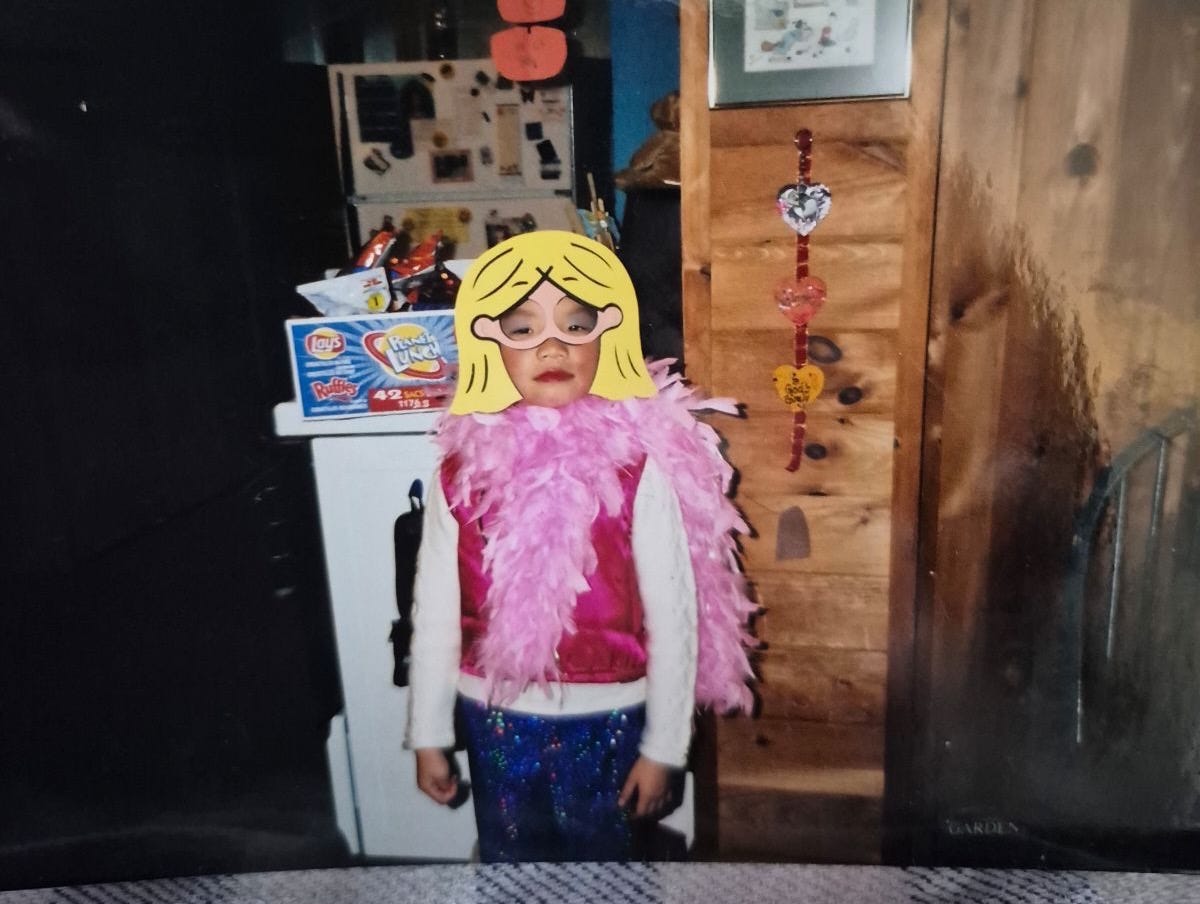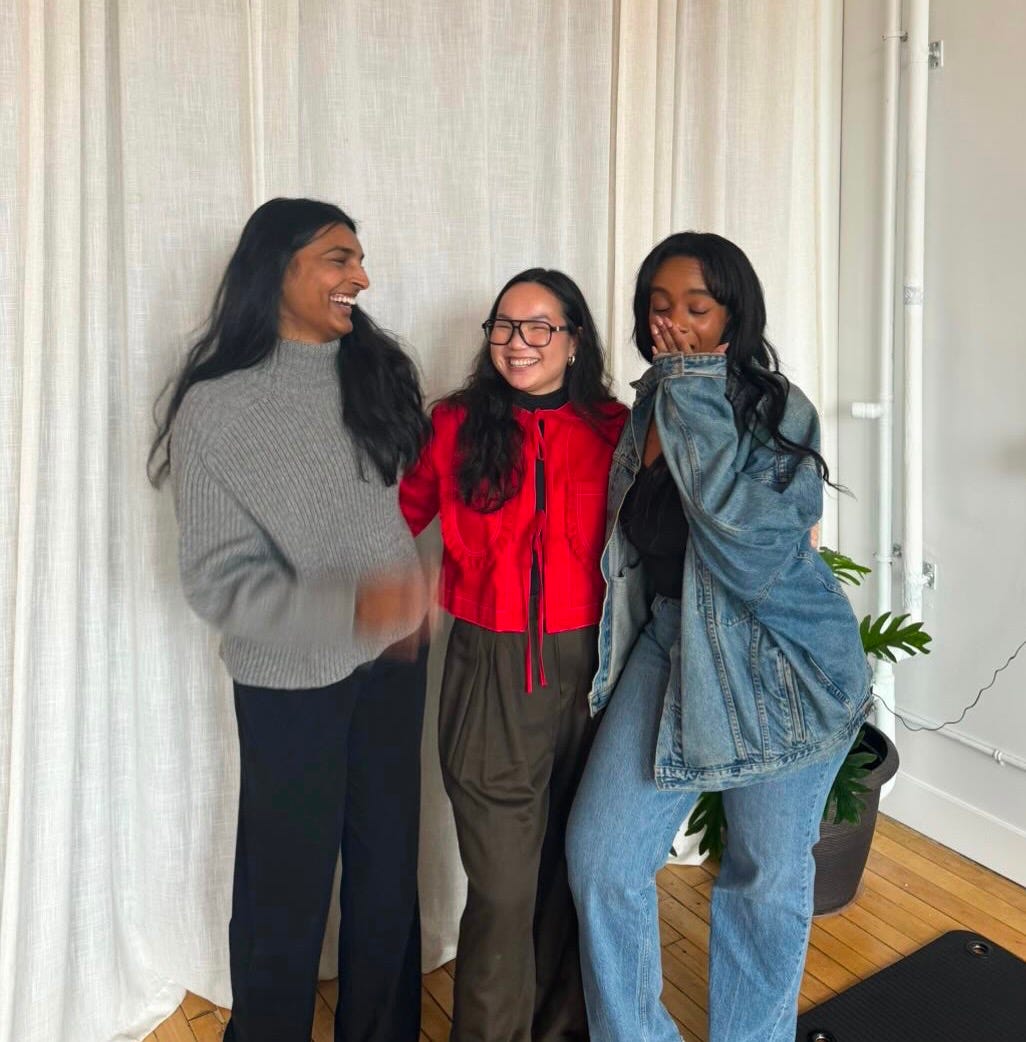I grew up wishing I could be Lizzie McGuire. I never wanted to be Mulan.
That might sound strange if you look at me—visibly Asian, with features that often mark me as “the other.” But when I was a kid, Mulan felt too foreign and too tied to a heritage I wasn’t sure I wanted. Meanwhile, Lizzie McGuire represented everything I thought I needed to fit in: blonde hair, pop culture references, and the easy confidence of a girl who never had to explain her differences. I saw characters who looked like me as belonging to someone else’s story—because I believed I’d already found my place.

A couple of decades later—yesterday, to be exact—I had the privilege of speaking to a room full of women and people of colour. At one point, I swept my gaze across the crowd—dark eyes, bright smiles, and a beautiful spectrum of brown, olive, and Black skin all glowing in the afternoon sun. A rush of something indescribable welled up inside of me.
For the first time in my life, I saw my reflection in every face. My bones recognized these people as kin in a way I never realized I needed. In a single breath, I felt like I belonged.

It’s only now, in my late 20s, that I’m able to claim this feeling. Growing up in a small, white town, I was constantly reminded I was the odd one out. I learned the language of fitting in—hearing phrases like “we don’t see colour,” as if ignoring my race was the highest form of respect. But it left scars I’m only now ready to confront. Over time, the shame and confusion built up: Was I “too Asian,” or was I not “Asian enough?”
I clung to anything palatable—whatever didn’t draw attention to my non-white features or my “funny” Chinese name. There were hardly any role models in the media who looked like me—beyond Mulan or the stereotypical “dorky Asian sidekick.”
I felt stuck between embodying what I thought white culture wanted or accepting a caricature of my identity. I never realized that this internal tug-of-war was building walls between me and other people of colour.
Then I moved to Toronto. Suddenly, I saw folks on the streetcar who spoke a dozen languages in one breath—people who looked like me running businesses, activists leading movements, families filling parks with cultures I’d never even heard of. And they embraced it all. There was pride, not shame, in their melanin, their languages, traditions, and stories. That’s when I began to see my hometown for what it was: a place where I never got the chance to explore my heritage because I was too busy trying to survive as a person of colour.
Stepping into rooms like the one yesterday, full of faces that remind me of my own, has been healing in ways I can’t fully articulate. It’s in the shared nods of understanding, the comfort of not having to explain. It’s the gentle laughter and inside jokes that require no backstory, because we know.
We know the ache of wanting to blend in and the warmth of finally standing out together.
I never wanted to be Mulan as a child because I felt so disconnected from my Chinese roots—I couldn’t see myself in her bravery or strength. But now I’ve learned there’s space for both the me who wanted to be Lizzie and the me who’s learning to embrace Mulan—or any other facet of my identity. There is no single way to be “Asian,” “Chinese,” or “BIPOC.” That’s precisely the point. We exist in countless stories and expressions of who we are.
So, if you’ve ever felt caught between worlds, please know there’s a place for you. A place where your story, your melanin, your accent, your mix of cultures and histories all belong.
Sometimes it takes distance, new environments, and the vulnerability of stepping into spaces you once feared. But there’s a seat waiting for you in a crowded room of people who won’t ask you to justify or shrink your identity.
And when you sit down among them, you’ll realize—maybe for the very first time—that you belong there just as you are.



